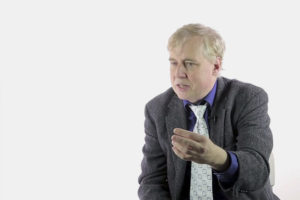5 Books about DNA Structure
What to read about the major store of biological information in living organisms
How can we identify genes that are more important for tumor development? What is the connection between DNA packaging into chromatin and the cells repair systems? Associate Professor of Medicine at Harvard Medical School, Shamil Sunyaev, speaks on local mutation rates in different cells of origin.
What would be the method used to identify genes that are important for cancer progression? The statistic way is pretty simple, so if you look at many samples of the same type of cancer, those genes should mutate more frequently. Many unrelated samples should carry mutations in the same gene. This idea sounds simple and worked very well in the beginning, because when you look at several, for example, five samples and there is a gene mutated in three of them, that’s very unlikely to happen by chance. However, with hundreds of genomes being sequenced it is possible purely by chance to find genes with two or three or even four events.
A gene is being used to produce RNA, and RNA is being used to produce protein. The amount of RNA being read from this gene varies and is called gene expression. Interestingly enough genes which are expressed at high levels are probably more important for the tumor, and they mutate less. The most likely biological explanation is in what we call transcription-coupled repair. When the gene is expressed, RNA-polymerase reading the RNA finds a pre-mutation lesion, damage in DNA, which may lead to mutation. It stalls and recruits a repair system called nucleotide excision repair, which excises this strand of DNA and replaces it based on the undamaged strand.
What is of interest is if we compare different samples of skin cancer of melanoma sequenced from regions of DNA which are open, and regions of DNA which are embedded in chromatin. We observe that those melanoma samples where the nucleotide excision repair system is not compromised, there is this reduction in density of mutations in open chromatin. However, in those samples, which carry mutations in repair system, some of them do not show this signature. So this is what implicates this repair machinery into this relationship between chromatin and mutation rate in cancers.

What to read about the major store of biological information in living organisms

Biologist Hopi Hoekstra on sand dunes of Nebraska, agouti signaling protein, and adaptation to the habitat

Biologist Steven Benner on artificial life, bioengineering, and challenges for synthetic biology